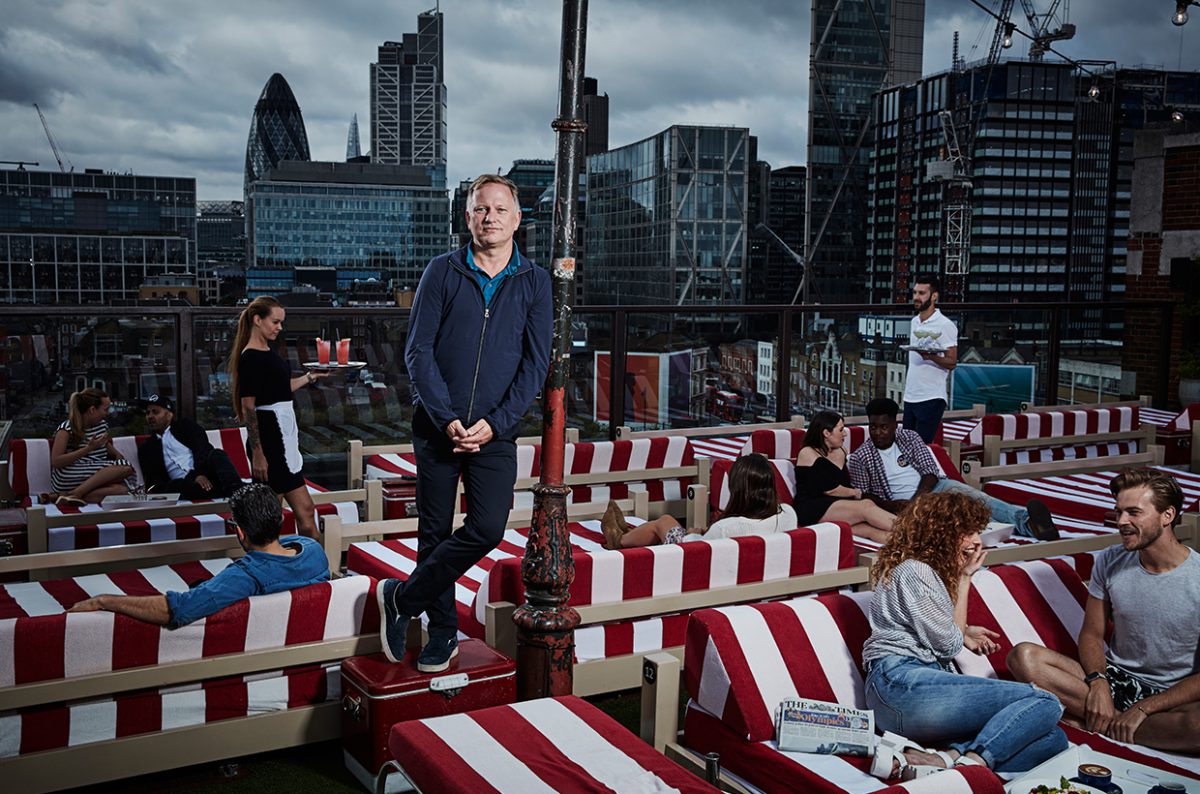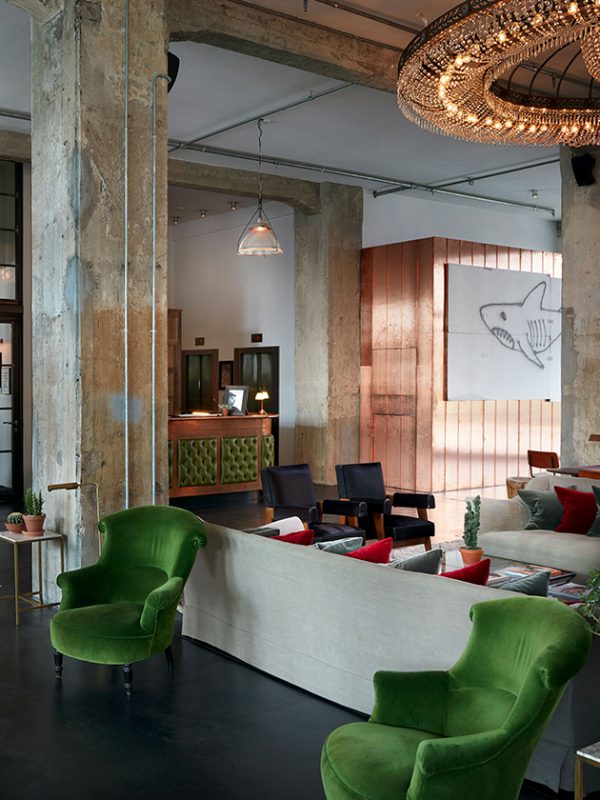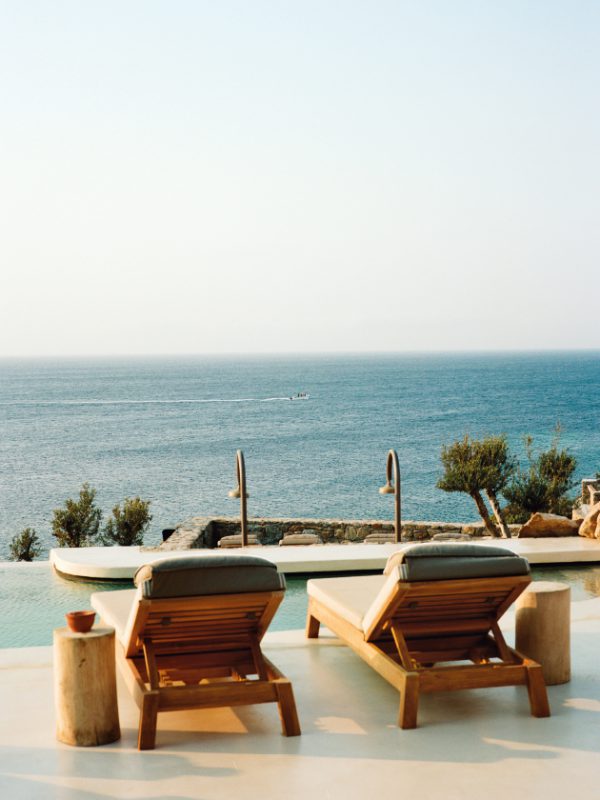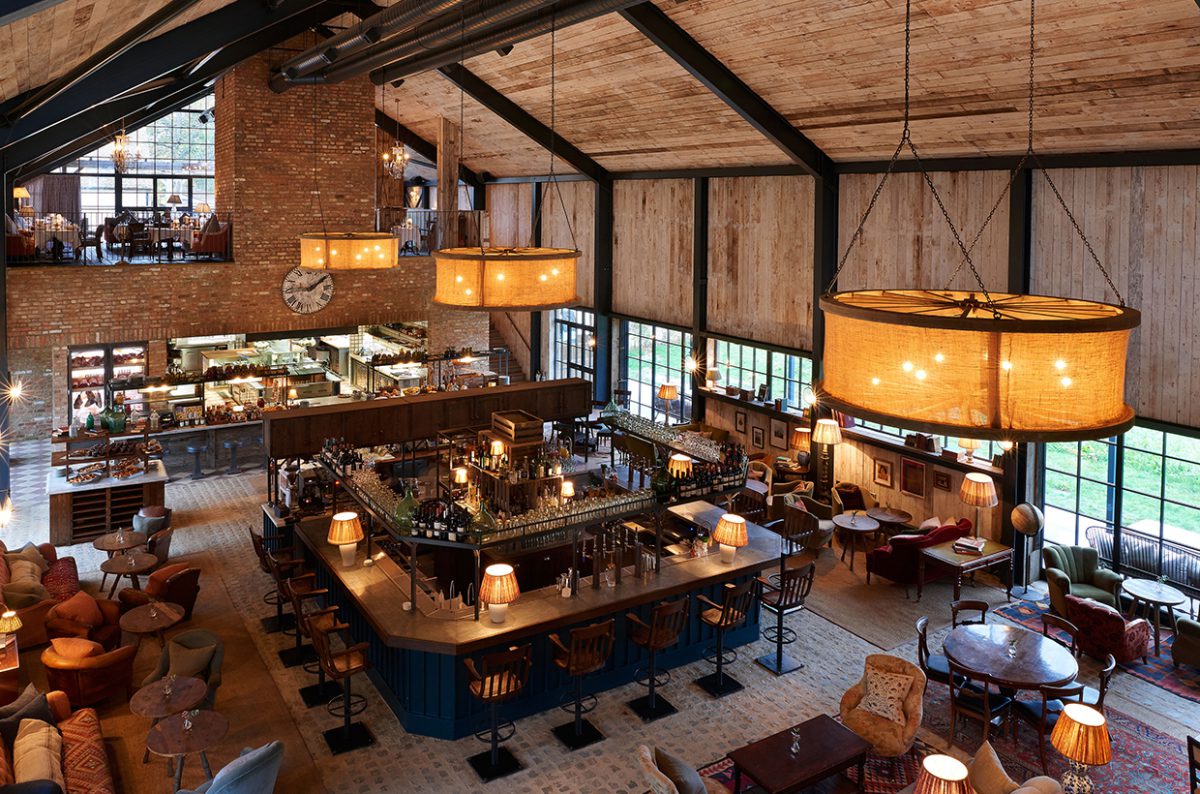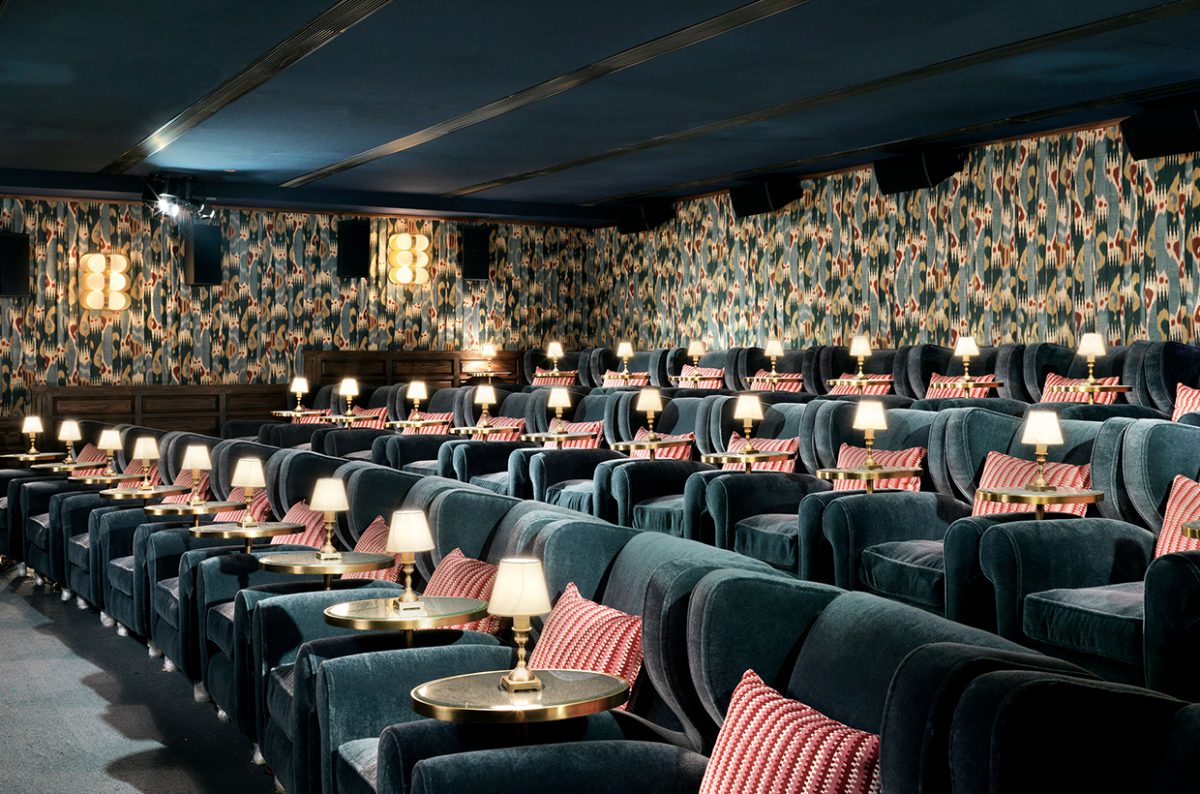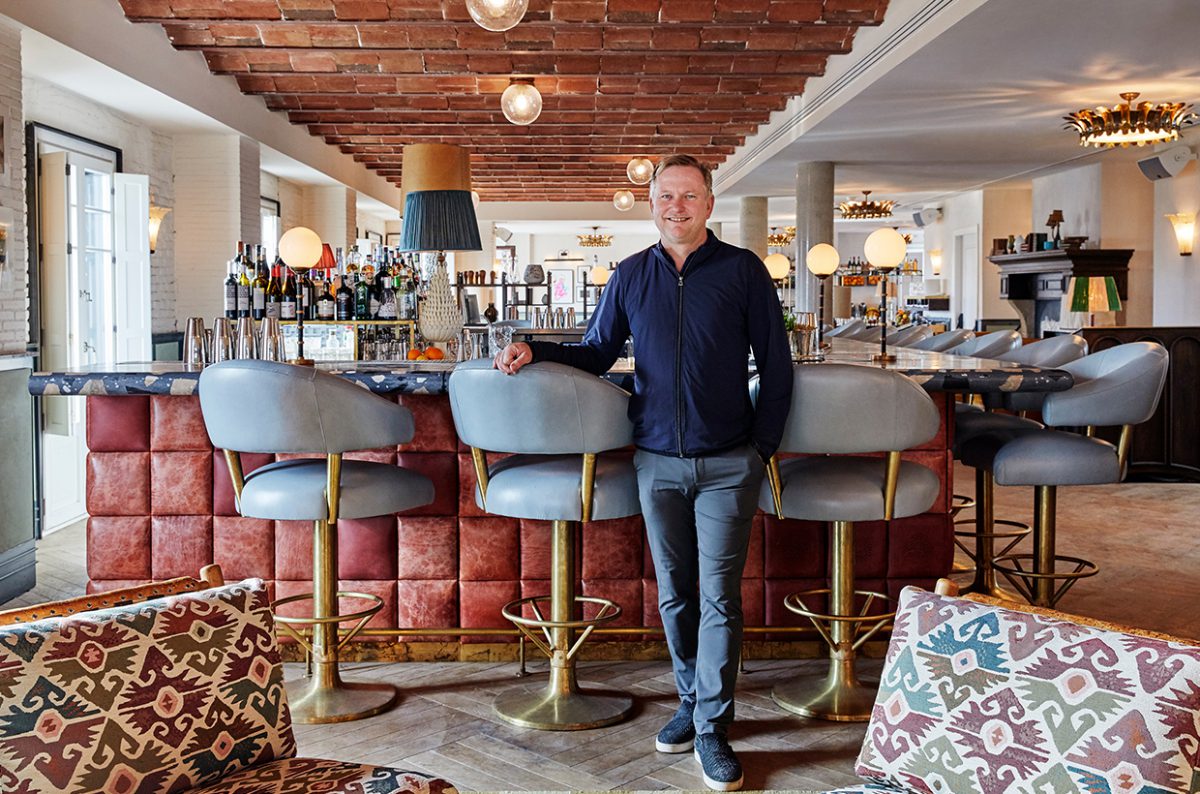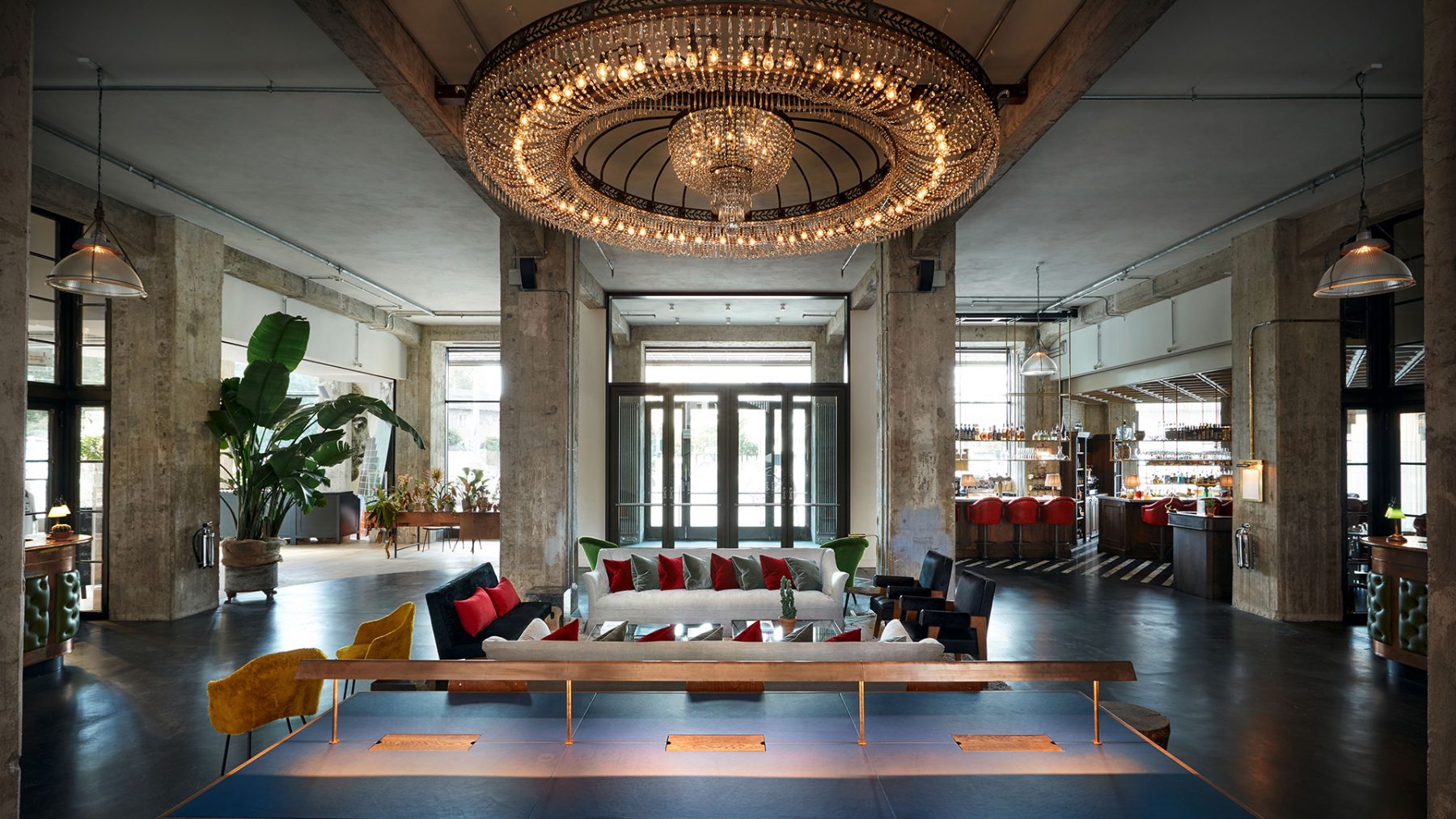The House Master by Dagmar von Taube | 3rd September, 2021 | Personalities
British entrepreneur Nick Jones has created an empire with his Soho House group: This June, he announced the company’s IPO in New York. Dagmar von Taube has met Jones several times over the past years, learning a lot about the soul of his club – and how to flirt in a dead zone.
“You can’t explain a club or a restaurant. You have to feel it.” NICK JONES
The first time I met him was six years ago, in Istanbul, where Nick Jones was opening a Soho House high above the Bosporus. Half of London had flown in for the event. “Would you like coffee? Turkish tea? Or perhaps something to eat?,” asked Nick Jones, welcoming me.
“Where would you like to sit – it’s perhaps a bit early for the bar? We could sit on the roof terrace by the pool – you can see all the way to Asia from there!” The man is incredibly congenial, probably because he is so laidback, completely at ease with people and his surroundings. The Soho House founder’s promise to his members is to bring creative people together. At the opening of his London hotel The Ned four years ago, showgirls shimmied up a storm on stage, a jazz band played and there was dancing, drinks, dinner spread out over eleven floors. Jones loves to party. At the interview the next morning, the host was lying across the sofa in the hotel bar until black coffee slowly, very slowly straightened him up. These encounters gave rise to the following conversation.
How would you define the essence of a club?
Nick Jones: The purpose of a club is to provide a space for like-minded people to meet.
Wikipedia couldn’t have explained it any better. Could you expand on that a little, Mr. Jones?
Please call me Nick. I’m not big on formalities. I’m also not a concept guy. You can’t really explain a club or a restaurant. There are rules, of course, people have to behave themselves. But it’s something you just have to have a feel for.
Private members’ clubs first started appearing in London to provide spaces where people could keep drinking after the pubs closed.
Yes, I started off in 1992 with the Café Boheme in Greek Street in Soho. One room with drinks, snacks and music. People would come in and just stand around socializing. We developed the first Soho House in the same building in 1995. Our formula is quite simple: Eat, drink, sleep – because these will always be people’s primary needs, in any city, in any country.
From this, the business grew into an international chain of members-only clubs, with 29 club houses in 11 countries today. In 2015, you opened Soho House Istanbul. How does a western-style club fit in with Ottoman traditions and modern-day Turkey?
It was the first private members’ club in Turkey to admit both men and women. Of the currently 2,000 local members, roughly 55 percent are women. Istanbul is very open to the West. It really always has been, but it’s more and more noticeable now. Its real estate market is booming and the new airport is one of Europe’s most modern. Istanbul also has a burgeoning startup scene. There are film and music festivals, fashion, an art scene and night life: Istanbul is a rocking place – and you know I never exaggerate. Our clubs aren’t political. Rules that may still be followed in other parts of Turkey don’t apply at our club. It was a completely new idea and it worked.
At one point, the building housed the U.S. embassy and was a haunt for secret agents.
Oh yes, it was a hive of American intelligence and diplomatic activity. It’s exciting that that old magic still lingers in the rooms, isn’t it?
In those days, people dressed to impress. Today, the dress code at your Istanbul club, like at all your locations, is casual only. Why this assault on ties?
It’s not an assault. We’re not against suits per se, I myself wear them. I just don’t like suits that make you look stiff. I don’t want a corporate or after-work atmosphere – people who bring the day’s tension-induced sweat to the bar. Imagine six bankers at the bar who come in straight from work, their stress still clinging to them. No, thanks. Or these sales rep types. When there’s ten people all wearing the same outfit, I feel like falling asleep with boredom. I just don’t like clothing hierarchies. Casual looks don’t give an indication about someone’s status, everyone starts off on an equal footing. It makes it easier for people to approach each other. Another of our ideas is to attract creatives: They don’t get changed to go to work. They wear the clothes that give them the most room to think.
The shirt you’re wearing is definitely a loose fit, Nick.
I just love eating and cooking. I get into a bad mood if I have to force myself into a tight jacket. It’s uncomfortable and just reminds me that I should be eating less. It stops me from focusing on what’s really important.
What’s a good casual look?
Jeans, polo shirts, espadrilles without socks – that’s what I prefer. I also like wearing shirts, but only untucked. Clothing should not require explanations or excuses. It should look natural.
Your New York City club stopped bankers becoming members at one point, and the L.A. location didn’t allow Hollywood agents to join for a while. Who’s your ideal member?
We never put restrictions on any professions joining. It’s possible that the membership lists were simply full at those locations at the time. We certainly don’t need show-offs or people who fill the room with hubris. Others arrive with their tribe. A bit like in the schoolyard, they’re only comfortable with their entourage around them. You then end up with two groups on either side of the room and no one dares to approach the other group. We want to attract individuals interested in connecting with other individuals. Easy, open-minded, not forced.
Where would people learn that?
In the kitchen! I wasn’t a prodigy in school, but I was a foodie from an early age. When I was 17, I started working in the catering trade, waiting tables, working as a chef. There’s no time for complicated discussions in a steamy kitchen. I always go with my gut feeling, I never analyze. I also wouldn’t serve a dish that can’t be summed up in three words. That’s my universal approach, which I apply to everything, including people.
Your Soho Houses are without doubt very homey. At the same time, their perfect coziness, that drapery- filled, nostalgic, traditional look feels a little manufactured. To some degree, they lack the quality people particularly love about English clubs, their organic quirkiness.
It’s possible that the interior design is a bit ornate. Our design team are very keen. I check their work, usually by having them produce a mock-up, which I then review: good, bad, great, so-so, fantastic, out of the question.
What do hotel rooms have to provide these days? They have to be seductive. Didn’t you think to yourself yesterday: “It’s a pity I’m here by myself”?
I was thinking of getting some sleep, actually. That’s relaxing as well, which is the point. I want exactly seven pillows on the bed and real crystal glasses in the minibar. I want a radio on the nightstand, just like at home. People don’t want anonymity, but they also don’t want the room to feel cheap or indecent. They want to feel comfortable. Unobserved. Free. Like they would inside their own four walls. Oh, lighting is important too. Extremely important.
The lighting in your rooms is usually a bit on the dark side.
Darkness equals intimacy. I’m very shy. Aren’t you, Dagmar?
Are you trying to take over the interview? Well, personally, I find the broken English of the Berlin Soho House employees quite amusing. The most successful aspect of the Berlin club is, of course, the building itself. It started off as a Jewish-owned department store, was used by the Nazis as the HQ of the Hitler Youth and after World War II, housed the central committee of the East German Communist Party. Its basement rooms were used for interrogations. How do you approach the history of such a building?
With respect. I don’t actually look for buildings, they find us. The Berlin property belongs to The Vinyl Factory, a very successful creative duo from London who also came up with their concept store of the same name under the direction of the London-based creative director and designer Alex Eagle.
You’ll soon be opening clubs in Paris, Rome and Brighton. This raises the question who will be using these spaces in the future, as more and more activities migrate to online spaces?
People will always need to eat, drink and sleep. My thinking is: In the long run, digital nomads will just move into our buildings long-term, because they won’t even know how to boil water anymore.
Many club concepts are attempting to reimagine work in order to attract the future Elon Musks. Not with a pool, but with co-working spaces. Isn’t that where things are heading?
Absolutely. We ourselves have created Soho Work, where our members are able to rent office space at extremely reasonable rates. Such office concepts are not new. New ideas are being developed all the time: clubs that frequently exude all the charm of a laboratory – so, none at all. That’s not my thing. Despite all this digitalization, my face still has a nose, mouth and eyes in it, rather than an electrical socket. We have always wanted to provide comfortable spaces for our members, at fair prices. Our annual Every House membership is 1,910 euros, you can stay in a bedroom for 180 euros a night, plus you can use our gyms and attend our events around the world for free. Members can now make payments with the SH.APP (Soho House app), which they can also use to connect with each other around the world. It’s Soho House in your pocket.
Four years ago, you opened The Ned, a magnificently opulent hotel in London’s financial district, located, of all places, in an old bank building. How does that tally with your philosophy of informality?
I’m not a philosopher, and, as I’ve said before, I make decisions based on my gut instinct. The Ned and the Soho Houses are two completely different concepts. A few years ago I was approached about the old Midland Bank building, which had stood empty for ten years. I went to have a look, just out of courtesy, and instantly fell in love with it: eleven floors, huge halls, 29,000 square meters. Perfect for a hotel.
You said you weren’t a fan of preppy, suited types. Were you suddenly reminded of the spending power of that demographic?
The idea for this hotel arose from the location. It just made sense to me. Shoreditch with all its creatives is just around the corner, as is Clerkenwell. Financial districts are undergoing exciting changes in many other cities, too, because there is so much international mobility.
The building and its refit cost 200 million pounds. The interior design is all in the style of the 1920s: 10-meter-tall ceilings, Persian marble, gold wallpaper, seashell-colored velvet. It’s reminiscent of an age in which people still had leisure time.
Its current neoclassical, art-deco style was somewhat predetermined by its architect, Sir Edwin “Ned” Lutyens, when he designed the building in 1924. He was one of the star architects of his day. He designed half of New Delhi and many English stately homes. Our design team spend four years sourcing items around the world: the finest crystal from the Czech Republic, vintage furniture from New York’s Plaza Hotel, canopy beds from Java. One of our chandeliers used to hang in Devonshire House.
All these items are fun to look at, but are people really still looking for the splendor of a Grand Hotel, in whose dining rooms families of industrialists used to greet each other? Essentially, don’t people just want to check-in and get to their rooms, maybe look out of the panoramic windows, but otherwise remain out of view?
That’s right, and we have 800 staff who just blend into the background. That’s the secret!
What must a high-end hotel provide today, in a city like London that is used to luxury?
We don’t use gimmicky words like “luxury” or high-end.” These days, it’s all about relaxing in order to get back into the thick of things. Almost everyone is time-poor. Our idea was to create a kind of racket club: Use the gym, go to the spa, socialize, eat, drink, sleep – everything under one roof. You can get your nails done and then have a drink at The Vault bar, or a swim in the pool where they used to store the gold bars. No interruptions. You’ll find no pretentiousness or stiff upper lips.
Why are there nine restaurants and 15 bars in the one lobby?
Because The Ned has 250 rooms. We also had to make use of the main banking hall, which wasn’t easy, because of its 92 columns alone. So we were thinking: Let’s create a food park that you can stroll through like a pleasure garden. From Hawaiian poke bowls and the Malibu Kitchen to the French café or the New York-style deli.
The cell phone coverage inside the building isn’t the best. Surely that’s an essential for any location these days.
The cell phone coverage is atrocious, that’s true. It’s due to the thick masonry. However, that does have its upsides: Flirting is easier in a cell phone dead zone.
The minibar contains two types of champagne. The bathroom is also well stocked: 14 kinds of lotion, shower gels and hair products. There are even condoms.
It’s great when there’s enough of everything, isn’t it?
Do you also rent out the rooms by the hour?
That’s never crossed our minds.
Hotel rooms often go unused. There’s an airport not far from The Ned. A quick dash to the hotel, jump in the shower and take a nap in-between flights. Book and only pay for the time you are actually using the room. Wouldn’t that be a good use of resources?
We won’t be doing that. We offer the traditional 24 hours.
Everyone is talking about mindfulness and about wanting to live more consciously. People would rather refrain from consuming, but also don’t want to dispense with luxuries. What’s your take on that?
For me it is all about balance, I like a bit of everything. We took this idea when we opened Soho Roc House next to Scorpios (Editor’s note: the hippest beach club on Mykonos). I think after becoming known for partying, Mykonos has mellowed out a bit in recent years. We wanted to create a home away from home for our members on the island that offered something for everyone; from wellness, good food and drinks and relaxed social spaces to parties, music events and DJs in the evenings too.
